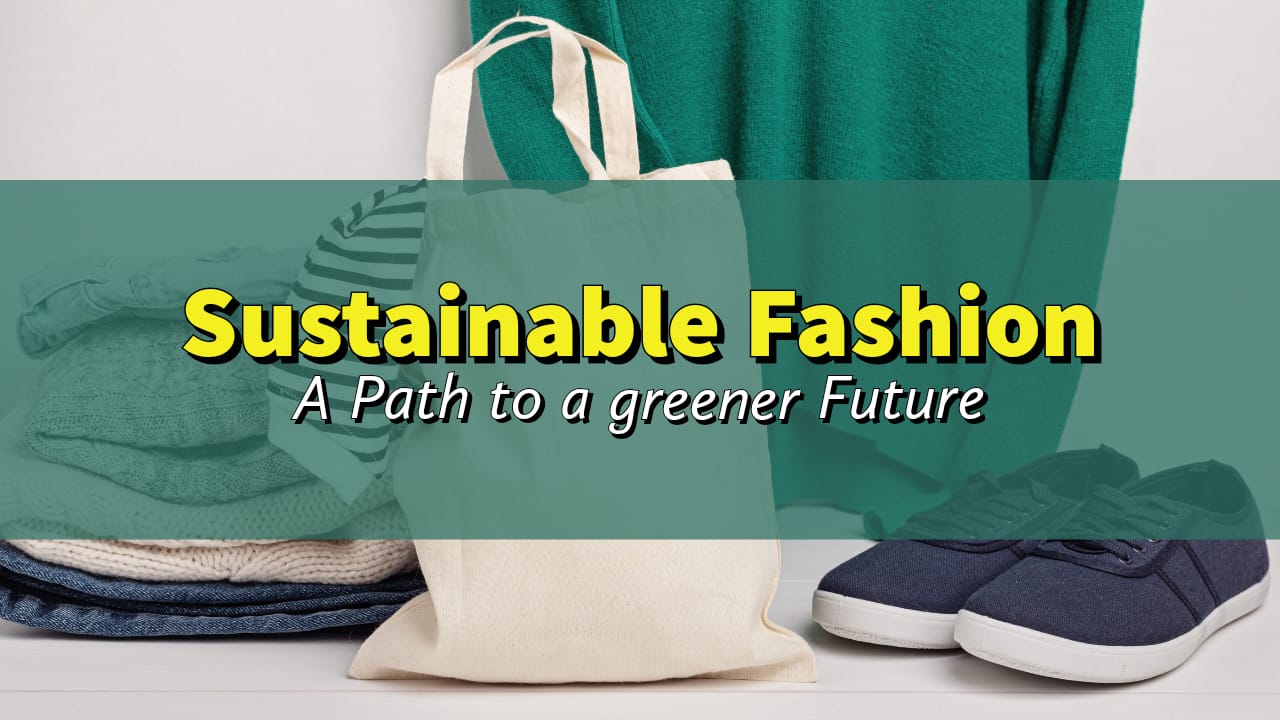In today’s ever-evolving fashion industry, sustainable fashion is a term that has gained significant traction in recent years. This concept is more than just a passing trend; it’s a movement that has the potential to reshape the entire fashion industry. In this article, we explore what sustainable fashion means, why it matters, and how it can lead us to a more environmentally conscious and ethically responsible future.
The Evolution of Fashion
Fashion has always been a reflection of society, mirroring its values, beliefs, and aspirations. Over the years, the fashion industry has experienced a remarkable transformation, with sustainability emerging as a pivotal force. Gone are the days when fashion was solely about trends, fast fashion, and disposable clothing. Today, it’s about making choices that benefit both the wearer and the planet.
Defining Sustainable Fashion
Sustainable fashion can be defined as clothing, shoes, and accessories that are designed, manufactured, distributed, and used in ways that are environmentally friendly and ethically responsible. It’s about embracing a holistic approach that considers the entire lifecycle of a garment, from its creation to its disposal.
Key Principles of Sustainable Fashion
- Ethical Production: One of the core principles of sustainable fashion is ethical production. This means ensuring fair wages, safe working conditions, and respect for the artisans and workers who create the garments. Brands committed to sustainable fashion often prioritize transparency in their supply chains.
- Eco-Friendly Materials: Sustainable fashion champions the use of eco-friendly materials such as organic cotton, hemp, Tencel, and recycled fabrics. These materials are not only kinder to the environment but also offer superior quality and durability.
- Minimal Waste: Reducing waste is another fundamental aspect of sustainable fashion. This involves minimizing textile waste during production and encouraging consumers to recycle or upcycle clothing when it’s no longer in use.
- Longevity: Sustainable fashion encourages consumers to invest in high-quality, timeless pieces that can withstand the test of time. This approach contrasts sharply with the fast fashion culture of disposable clothing.
Why Sustainable Fashion Matters
- Environmental Impact: The fashion industry is notorious for its environmental footprint. From water-intensive cotton farming to chemical-laden dyeing processes and excessive textile waste, the industry has historically been a major contributor to pollution and resource depletion. Sustainable fashion seeks to reverse this trend by adopting eco-friendly practices.
- Social Responsibility: Beyond the environment, sustainable fashion also addresses social issues. By supporting ethical production and fair labor practices, it ensures that workers are treated with dignity and respect, helping to combat exploitation in the industry.
- Quality Over Quantity: Sustainable fashion encourages consumers to shift their mindset from quantity to quality. Instead of buying multiple low-cost items that quickly wear out, individuals are encouraged to invest in durable, timeless pieces that not only reduce waste but also save money in the long run.
How to Embrace Sustainable Fashion
If you’re looking to make the switch to sustainable fashion, here are some practical steps to get you started:
- Research Brands: Start by researching fashion brands that prioritize sustainability. Look for certifications like Fair Trade or Global Organic Textile Standard (GOTS) to ensure you’re making informed choices.
- Shop Mindfully: When shopping, ask yourself whether you truly need a particular item. Consider its longevity and versatility in your wardrobe before making a purchase.
- Secondhand Shopping: Exploring thrift stores and online secondhand marketplaces can be a fantastic way to embrace sustainable fashion. Not only do you extend the life of clothing, but you also reduce demand for new production.
- Care for Your Clothes: Proper care can significantly extend the lifespan of your clothing. Follow care instructions and consider repairs or alterations when necessary.
- Educate Yourself: Stay informed about sustainable fashion trends and practices. The more you know, the better choices you can make.
The Future of Fashion
Sustainable fashion isn’t just a passing phase; it’s a movement that continues to gain momentum. As consumers become more conscious of their choices, brands are increasingly embracing sustainable practices. This shift is not only benefiting the planet but also leading to a more ethical and responsible fashion industry.
Conclusion
Sustainable fashion is essential for creating a more sustainable future. By embracing sustainable fashion, we can reduce our environmental impact, support ethical brands, and invest in high-quality pieces that will last for years to come. Let’s all do our part to make fashion a more sustainable industry.








2 thoughts on “Sustainable Fashion: A Path to a Greener Future”